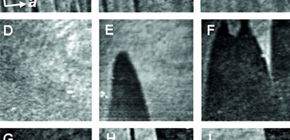
A new method for controlling multifunctional electronic materials established
Combination of electricity and magnitism allows for multifunctional materials
A group of researchers from Osaka University, Tohoku University, and Aoyama Gakuin University verified a new electronic control method of multiferroics and established its basic principles. In recent years, multiferroics, new multifunctional electronic materials coupling electric and magnetic properties, have drawn attention as a target of advanced basic research in material science.
- Graduate School of Science, Tohoku University -- MATSUBARA Masakazu (Associate Professor)
- College of Science and Engineering, Aoyama Gakuin University -- MOCHIZUKI Masahito (Associate Professor)
- Graduate School of Engineering Science, Osaka University -- KIMURA Tsuyoshi (Professor)
In multiferroics, special ferroelectrics with magnetic properties can have their magnetic intensity controlled by an electric field (voltage) and their dielectric properties can be controlled by a magnetic field. Therefore, multiferroics are expected to be used for memory devices with an epoch-making function. Researchers have been involved in an intense competition for clarifying multiferroics' electronic function mechanism and creating a new function in them.
This group of researchers succeeded in controlling multiferroics in external, electronic, or magnetic fields and in visualizing their electronic function control process, a world first. This group also verified that ferroelectricity was controlled in a magnetic field at will, establishing a basic principle of new memory logic devices. Furthermore, this group discovered a new electronic function and clarified its mechanism through theoretical speculation. These results will open a gate for research regarding multiferroics as dream multifunction electronic materials and will likely lead to innovative nano-electronics using the new principles and functions of multiferroics discovered by this group.
Abstract
The manipulation of domains by external fields in ferroic materials is of major interest for applications. In multiferroics with strongly coupled magnetic and electric order, however, the magnetoelectric coupling on the level of the domains is largely unexplored. We investigated the field-induced domain dynamics of TbMnO3 in the multiferroic ground state and across a first-order spin-flop transition. In spite of the discontinuous nature of this transition, the reorientation of the order parameters is deterministic and preserves the multiferroic domain pattern. Landau-Lifshitz-Gilbert simulations reveal that this behavior is intrinsic. Such magnetoelectric correlations in spin-driven ferroelectrics may lead to domain wall-based nanoelectronics devices.
Electric-field control of domains in TbMnO3. (A to I) Progression of multiferroic domain structure in a cycled electric field Ec along the c axis (temperature= 22 K). Bright and dark regions correspond to +Pc and -Pc domains,respectively. (J) Ferroelectric hysteresis loop Pc(Ec) derived from the areal ratio of +Pc to -Pc domains in SHG images (A) to (I).
Figure 2. Domain structure across the first-order polarization flop. (A and B) Multiferroic domain structure at 9 K in the ground state (Hb=0T, Pa=0, Pc≠0) and excited state (Hb = 10 T, Pa≠0, Pc= 0), respectively. The resulting domain structures are identical. Thus, the polarization flop occurs in a deterministic way; i.e., with a unique correlation +Pc ⇔ +Pa and -Pc ⇔ -Pa of the domain states.
(C and D) The magnified regions show that sideby-side domain walls are changed to head-to-head/ tail-to-tail walls by the polarization flop, leading to nominally charged domain walls.
To learn more about this research, please view the full research report entitled " Magnetoelectric domain control in multiferroic TbMnO 3 " at this page of the Science website.
Related link

